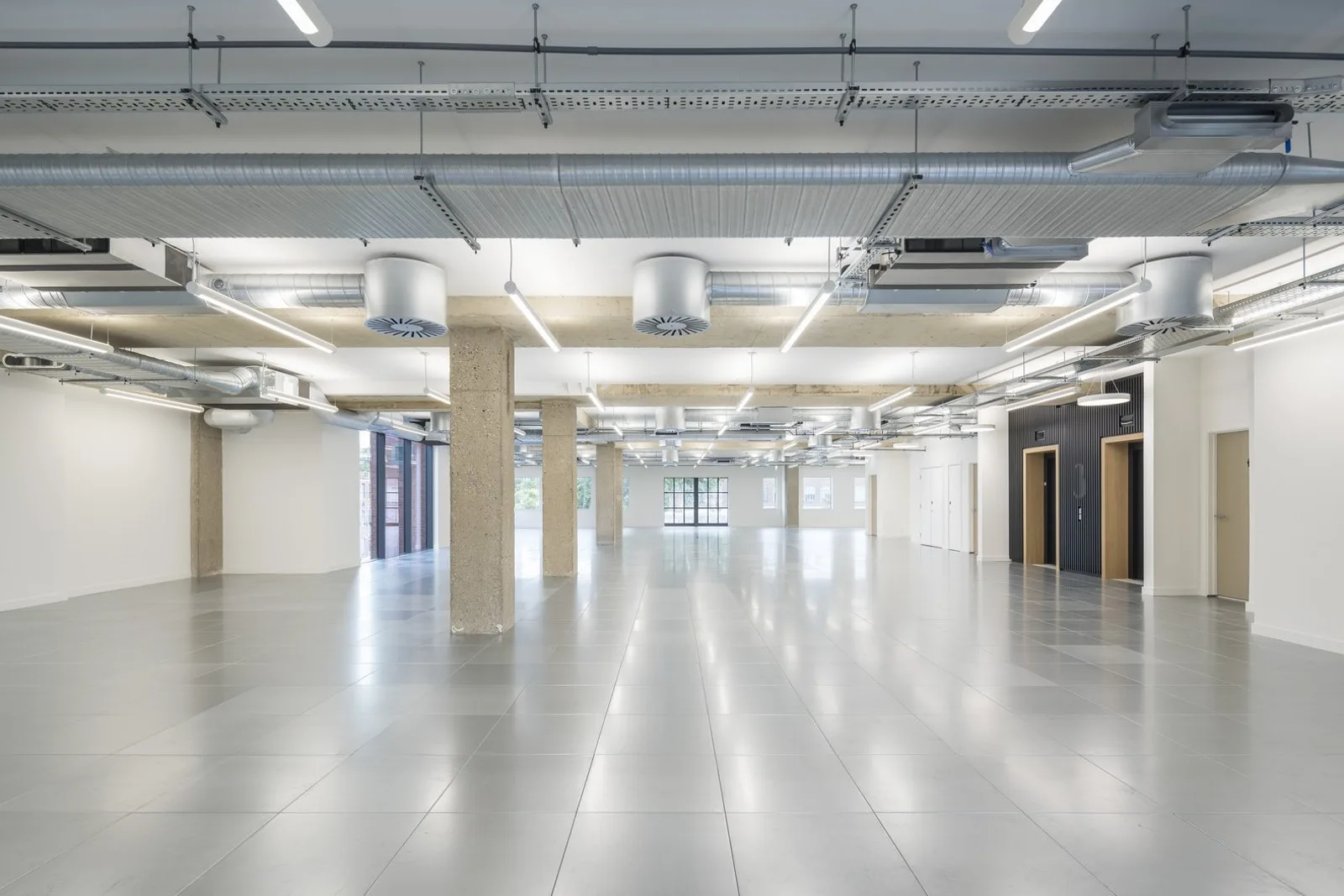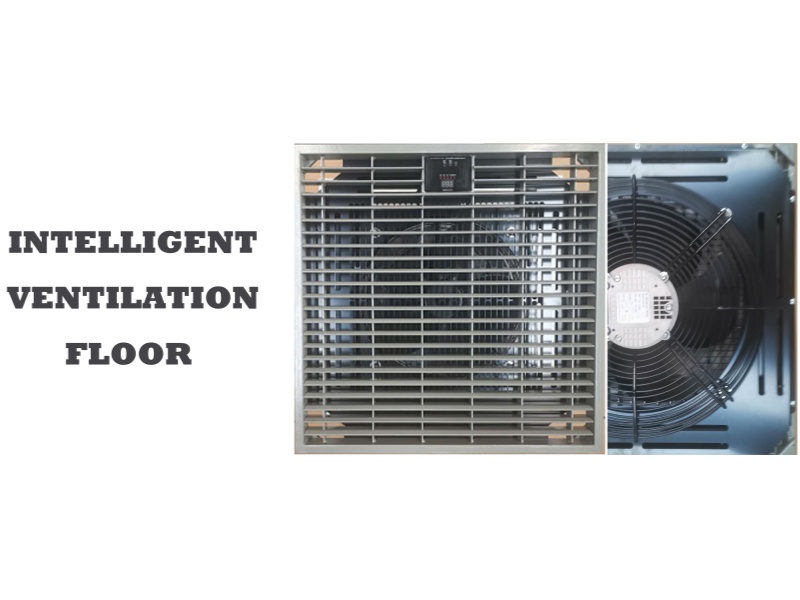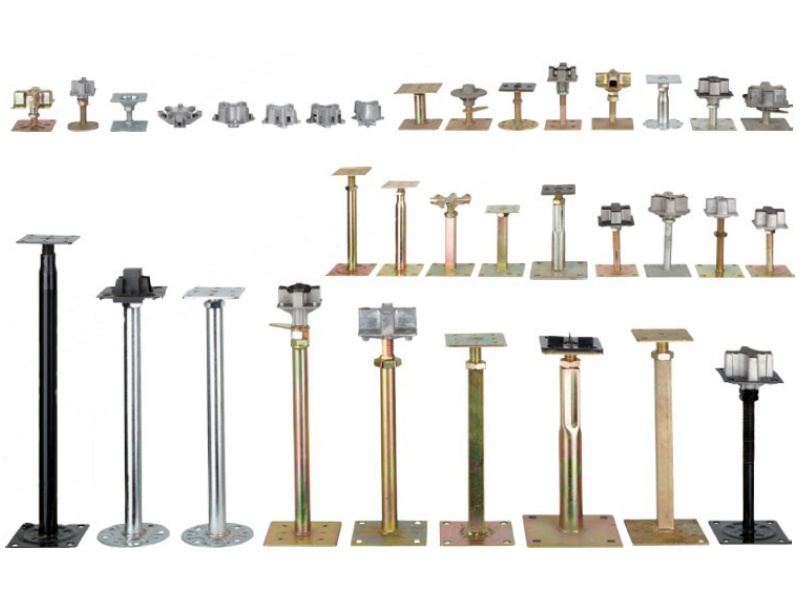
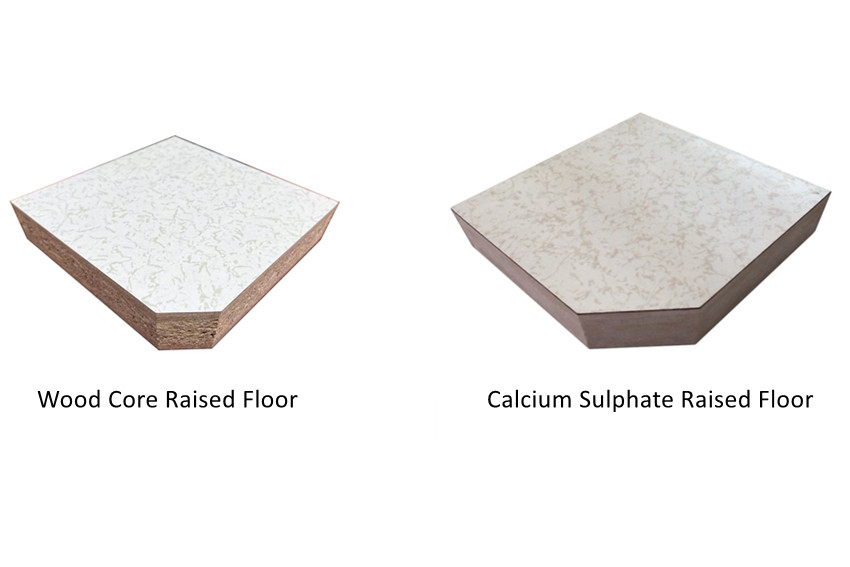
Wood Core Raised Floor VS Calcium Sulphate Raised Floor
When it comes to anti-static raised floors, we generally think of anti-static all-steel cement raised floors because this is the most widely used raised floor. But there are also two types of raised floors that are gaining popularity, anti-static wood core raised floors, and anti-static calcium sulphate raised floors. These two types of flooring are also prevalent: computer rooms, data centers, control rooms, administrative centers, and office buildings. Next, we will detail the similarities and differences between wood core raised floors and calcium sulphate raised floors. 1. Wood Core Raised Floor VS Calcium Sulphate Raised Floor Structure The structure of the wood core anti-static raised floor and calcium sulphate raised floor is the same. They are both glued with galvanized steel plate or aluminum foil at the bottom of the substrate, sealed with PVC edge strips around, and choose HPL, PVC, ceramic, or carpet as decoration on the top. Therefore,

Raised Floor Daily Maintenance
Raised floor characteristics There are many characteristics of raised floors. The most prominent feature of the raised floor is that there is a space under the floor. It can route or ventilate below, which is very flexible and easy to disassemble and assemble. The raised floor is fixed in size of 600*600mm, so we can interchange at will and is easy to assemble. This article takes the steel raised floor as an example to talk with you about the daily maintenance of the raised floor. Why daily maintenance important The raised floor is a steel structure, so it is solid and can withstand a lot of force. The surface of the OA network floor is covered with epoxy powder, so it is waterproof, fireproof, and anti-corrosion. The surface of the anti-static raised floor is covered with HPL/PVC covering, so it also has the advantages of being anti-static and waterproof. The

Network Raised Floor Strength and Application — Titanflor
1. What is network raised floor? Network raised floor is a kind of raised floor. We can also call it steel cement raised floor or bare finish steel raised floor. The surface and bottom of network raised floor are steel plates. It’s filled with foaming cement. Four surfaces through conductive epoxy processing. There are corner lock holes at four corners. There are three sizes of network raised floors. One is 500*500mm, the thickness is 28mm. One is 600*600mm, the thickness is 33mm. The other size is 24”*24”, which is 610*610mm. The first size of 500*500mm is usually used in China, Korea, and Japan. Most areas in the world use the second size of 600*600mm. The third size of 610*610mm, which is 24″*24″, is the American standard size, and it’s widely used in the USA. 2. What’s the strength of network raised floor? Excellent loading performance. The top and bottom of
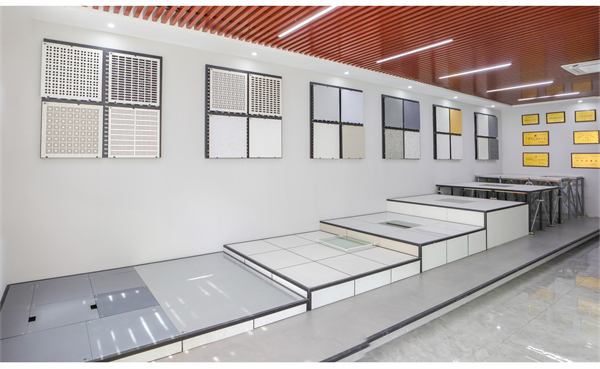
If you make a raised floor sample room — Titanflor
What do you need to do if you are going to make a raised floor sample room? First, you need to know the type of raised floor. The role of the sample room is to display various raised floors. So let’s first get a clear view of the raised floor. According to the material, we can divide the raised floors into steel raised floor, calcium sulfate raised floor, wood core raised floor, and aluminum raised floor. Steel raised floor can be divided into network raised floor, anti-static raised floor (according to different coverings, it can be divided into HPL raised floor, PVC raised floor, ceramic raised floor, etc.), perforated panel. Calcium sulfate raised floor can be divided into encapsulated raised floor and anti-static raised floor. Wood core floors can be divided into encapsulated raised floors and anti-static floors. Aluminum raised floors can be divided into solid panels, perforated panels, and

Low-profile Raised Floor
With the development of the times and the advancement of science and technology, intelligence has gradually entered various office buildings. We use more and more electrical appliances in office buildings. As a result, more and more office buildings use raised floors. However, in many cities where land is expensive, for example, in South Korea and Japan. The area of the office is very limit and the height is also very limit. If the height of the raised floor is high, the utilization rate of the office building will be greatly reduce. At this time, the low-profile raised floor of our Titanfloor can fully show its advantages. What is a low-profile raised floor? What is a raised floor? We also call raised floors as access floors. We can raise the floors. There is no covering on the surface of the network raised floor. The floor surface through conductive epoxy processing. The
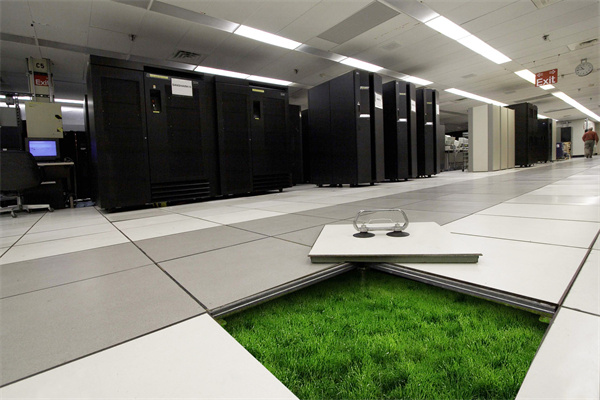
Anti-static Raised Floor Characteristics
In daily life, when we ware and take off sweaters, there may cause sparks with cracking sounds. In winter, if we rub our hair hard, our hair will explode. This is static electricity. Today, we Titanflor will take you to understand the classification of the anti-static raised floor, the characteristics of the anti-static raised floor, and its applications. 1. OA network raised floor OA network anti-static raised floor is also called bare finished raised floor or office raised floor. It is composed of all steel, and the four corners are independently supported. The floor surface is treated with conductive epoxy resin electrostatic spraying, and the inner cavity is filled with foamed cement. It has strong load capacity, anti-noise, surface wear resistance, and dirt resistance. We often use them in office buildings, computer rooms, electric classrooms, etc. 2.Steel anti-static raised floor An anti-static raised floor is mainly covered with PVC/ceramics, and

Sensor Fan Assist Floor in Data Center
As we all know, the heat dissipation of equipment in the data center is particularly large. It requires a safe and reliable operating environment for equipment in the data center, including temperature, humidity, cleanliness, etc. In order to solve the challenges of high density and thermal load in data centers, Titanflor has developed a series of high-efficiency and energy-saving solutions. Sensor fan assist floor can automatically determine the on-site temperature, and make real-time reflections based on sensor signals, automatically adjust the temperature. The temperature-controlled fan is an upgrade of a function of the ordinary fan, and the scope of use on the market is becoming wider and wider. However, many people don’t know much about how the sensor fan assist floor works. So, what is the working principle of the sensor fan assist floor? How does the sensor fan assist floor work? Sensor fan assist floor is an intelligent fan system raised

Raised Floor Edge Trim
Once I talked with one client about the raised floor edge trim . I find that there’s much knowledge in raised floor edge trims. What is raised floor edge trim? There are many kinds of raised floors, we don’t say here. We can divide the anti-static raised floor into the anti-static raised floor with edge trim and the anti-static raised floor without edge trim, according to whether has the black edge trim. The edge here refers to here is the edge trim we are talking about. Although there are various raised floors without edge trim, there are more raised floors with edge trim. The edge trims are all conductive. The black conductive edge trims to ensure the anti-static function of the anti-static raised floors. And also they provide good physical protection for the anti-static raised floor edge. The advantage of raised floor edge trim Used for covering various types of

Raised Floor System SABER Certification Process
Recently, we have a batch of products to ship to the Saudi Arabia. We are selling raised floor systems. At the beginning, our client thought they didn’t need to do the SABER certification. Finally they found they need. And also, we help them with SABER certification process. Maybe many people(including ourselves) doesn’t familar to the SARBER certification. So, we talk about the SABER certification this topic. What is SABER certification? SABER certificate is a conformity certification assessment plan launched in 2019 for non-Saudi local companies (that is, companies that need to export to Saudi Arabia) for product registration, issuance and acquisition of compliance CoC certificates. Products will be classified according to risk categories: High-medium-low different risk categories adopt different compliance inspection procedures, which will be carried out by accredited institutions (such as INTERTEK, NEMKO, CQC, TUV and SGS, etc.). Our certification this time is the TUV agency designated by the customer.

Differences Between Office Raised Floors
Once, I talked about office raised floors with one of our clients. I find that he can’t tell the differences between the floors. So, I will introduce the office raised floors: Steel cement raised floor, encapsulated calcium sulfate raised floor, encapsulated wood core raised floor. Application of office raised floors As a modern intelligent office environment, it is not enough to meet the specific needs of application equipment. The environment should also be comfortable, clean, beautiful, efficient, convenient, and flexible. Due to the increase of office automation equipment, the horizontal wiring of power cords and data voice lines in the room is staggered and complicated. It has brought many adverse effects to the modern office environment. A new wiring method for building development, embedding steel wire ducts and steel pipes in the floor slab, solves the shortcomings of wire duct and bridge wiring in the ceiling and other wiring methods.

